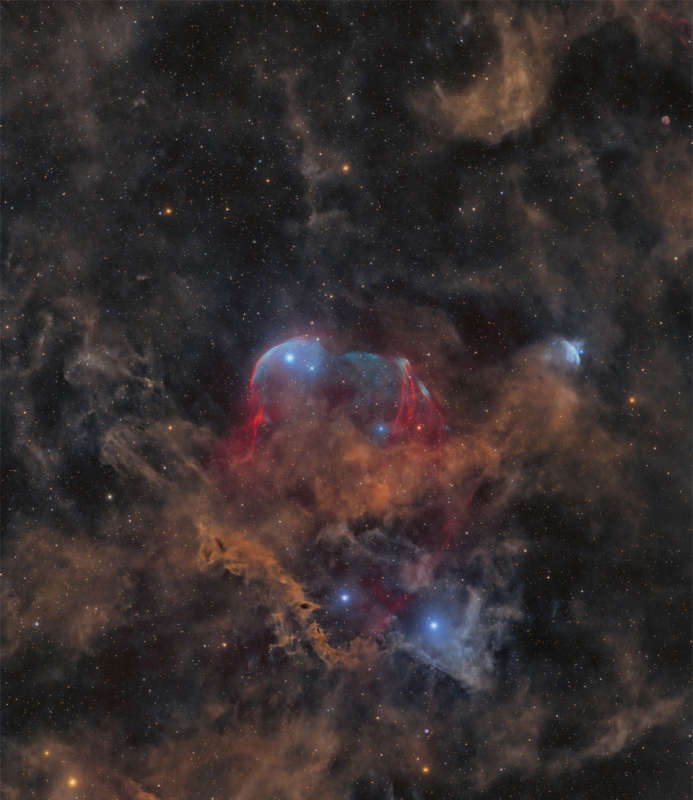APOD: 2025 June 9 Б Between Scylla and Charybdis: A Double Cosmic Discovery

| << Yesterday | 9.06.2025 | Tomorrow >> |

Credit & Copyright: M. Drechsler, Y. Sainty, A. Soto, N. Martino,
L. Leroux-Gere,
S. Khallouqui, & A. Kaeouach;
Text:
Ogetay Kayali
(Michigan Tech U.)
Explanation:
Can you identify this celestial object?
Likely not Б because this is a
discovery image.
Massive stars forge heavy elements in their cores and,
after a few million years, end their lives in powerful
supernova explosions.
These
remnants cool relatively quickly and fade,
making them difficult to detect.
To uncover such faint, previously unknown supernova remnants,
a dedicated group of amateur astrophotographers searched through
sky surveys
for possible supernova remnant candidates.
The result: the first-ever image of supernova remnant G115.5+9.1 Б
named Scylla by its discoverersБglowing faintly
in the constellation of the mythological King of Aethiopia:
Cepheus.
Emission from
hydrogen atoms in the remnant is shown in red,
and faint
emission from oxygen is shown in hues of blue.
Surprisingly, another discovery lurked to
the upper right: a faint, previously unknown
planetary nebula candidate.
In keeping with mythological tradition,
it was named Charybdis (Sai 2) Б a nod to the ancient Greek expression
"caught between Scylla and Charybdis" from
HomerБs Odyssey.
1999 2000 2001 2002 2003 2004 2005 2006 2007 2008 2009 2010 2011 2012 2013 2014 2015 2016 2017 2018 2019 2020 2021 2022 2023 2024 2025 |
Январь Февраль Март Апрель Май Июнь Июль Август Сентябрь Октябрь Ноябрь Декабрь |
NASA Web Site Statements, Warnings, and Disclaimers
NASA Official: Jay Norris. Specific rights apply.
A service of: LHEA at NASA / GSFC
& Michigan Tech. U.
|
Публикации с ключевыми словами:
supernova remnant - planetary nebula - остаток Сверхновой - Планетарная туманность
Публикации со словами: supernova remnant - planetary nebula - остаток Сверхновой - Планетарная туманность | |
См. также:
Все публикации на ту же тему >> | |